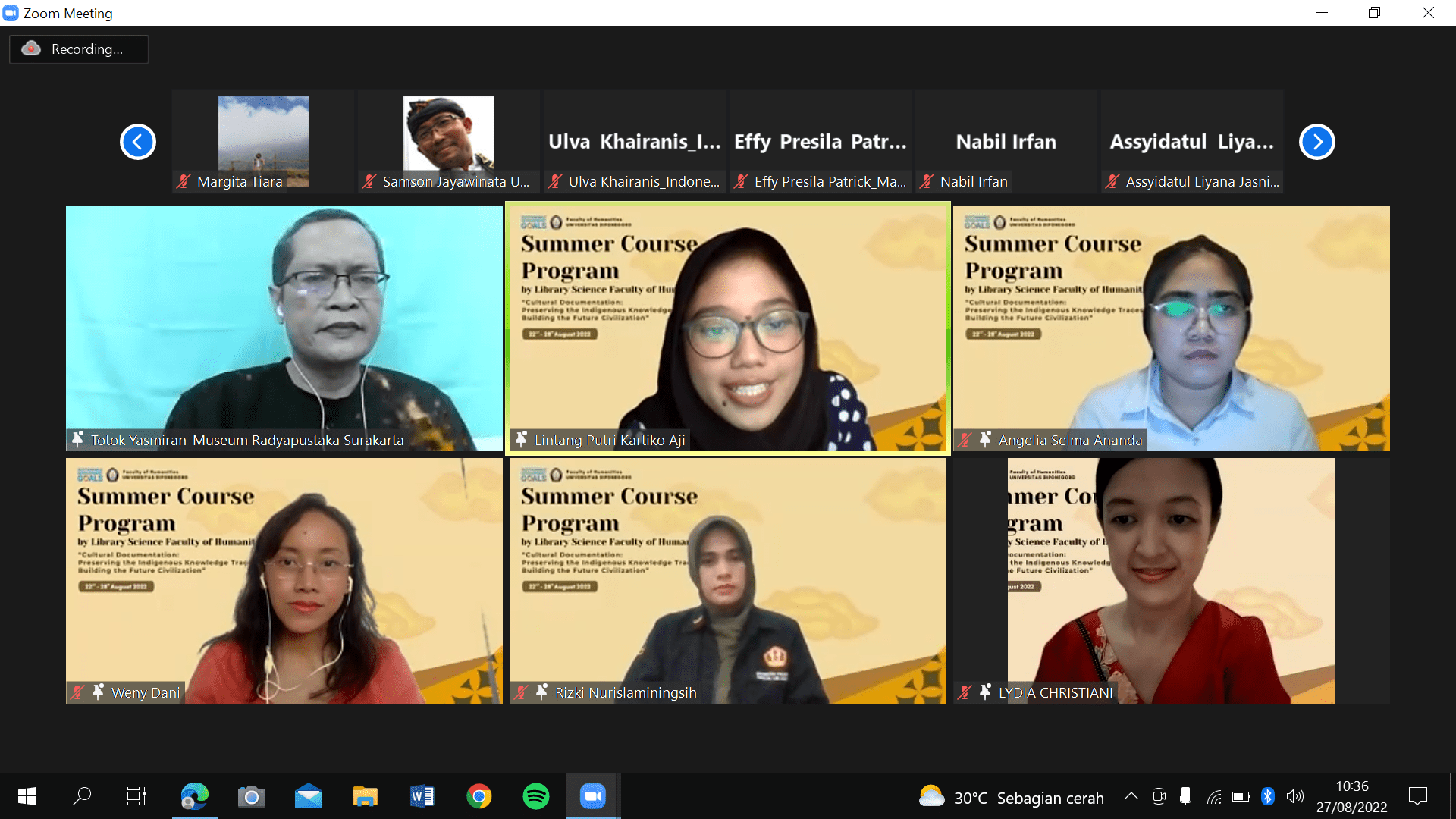The enthusiasm increased as the sixth day of the 2022 Summer Course, which was offered online by FIB Undip’s Library Science Study Program, approached. On the sixth day, Nur’aini Perdani SP, M.A., one of the lecturers at Library Science Faculty of Humanities UNDIP, once again served as the event’s moderator. The folklore film “The New Legend of Klinting” was screened to kick off the festival.
Three speakers, together with Kusnandar, S.Sos., M.Sc., Ph.D. candidate at Leiden University, Rizki Nurislaminingsih, M.A., lecturer in library science at Padjadjaran University (UNPAD) Sumedang, and Totok Yasmiran, S.S., from Radya Pustaka Museum in Surakarta City, Central Java, spoke on the sixth day of the summer course.
Mang Kus, also known as Kusnandar, S.Sos, M.Si., led the first session of the event. He contributed documentation of cultural heritage, including Javanese folklore.
Folklore is defined at the outset of the text. He cites numerous sources to support his explanation that folklore is the oral history of a community or country, dance, music, and other traditional art forms that tell tales of the traditional culture, customs, habits, and modes of expression that have been perpetuated by that society or nation.
He also discussed some of the procedures used to record folklore. Among them are:
- Inventorying, which can be carried out through interviews and research into documents and literature;
- Recording: audio and video recording are both options;
- Disseminating: To increase the public’s access to documented folklore, this can be accomplished through publishing, planning occasions like seminars, and information networks.
The second session resumed with presentations by Totok Yasmiran, S.S., Rizki Nurislaminingsih, M.A., and Lydia Christiani, M. Hum, on the subject of “A Value of Javanese Folklore.” The New Legend of Klinting is the name of the Javanese folklore that will be covered in this session. The Baruklinting fable is a piece of folklore that originated in Banyubiru, Semarang Regency, in Central Java.
In this myth, Baru Klinting, a dragon child, is on the lookout for his austere father. Baru Klinting was not acknowledged as his son after meeting the Sage on Mount Telomoyo. Baru Klinting was given the requirement that he circle Mount Telomoyo and practice meditation in exchange for his confession. A local who lived near Baru Klinting’s hermitage unintentionally saw a portion of his body and chopped it up to serve as a side dish for meat at a gathering of the community. A shabby boy approached the inhabitants during the party for the people and asked for food; however, the locals responded with an arrogant and condescending reaction.
The event ended with the speaker who drew a moral message that could be taken from the Baru Klinting folklore that arrogance, arrogance and disrespect for others are not commendable traits. And every evil will reap calamity. While good will get good too.

